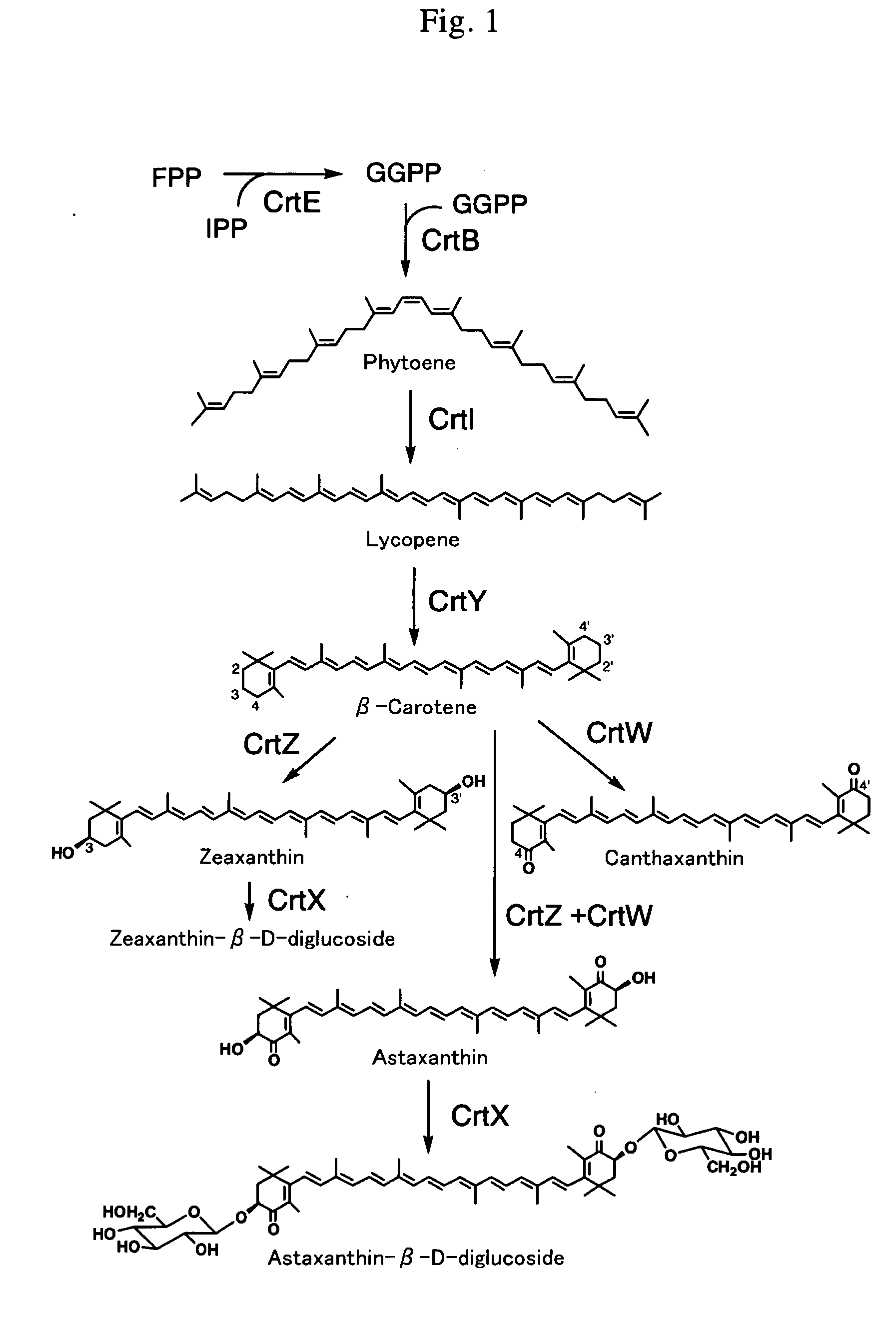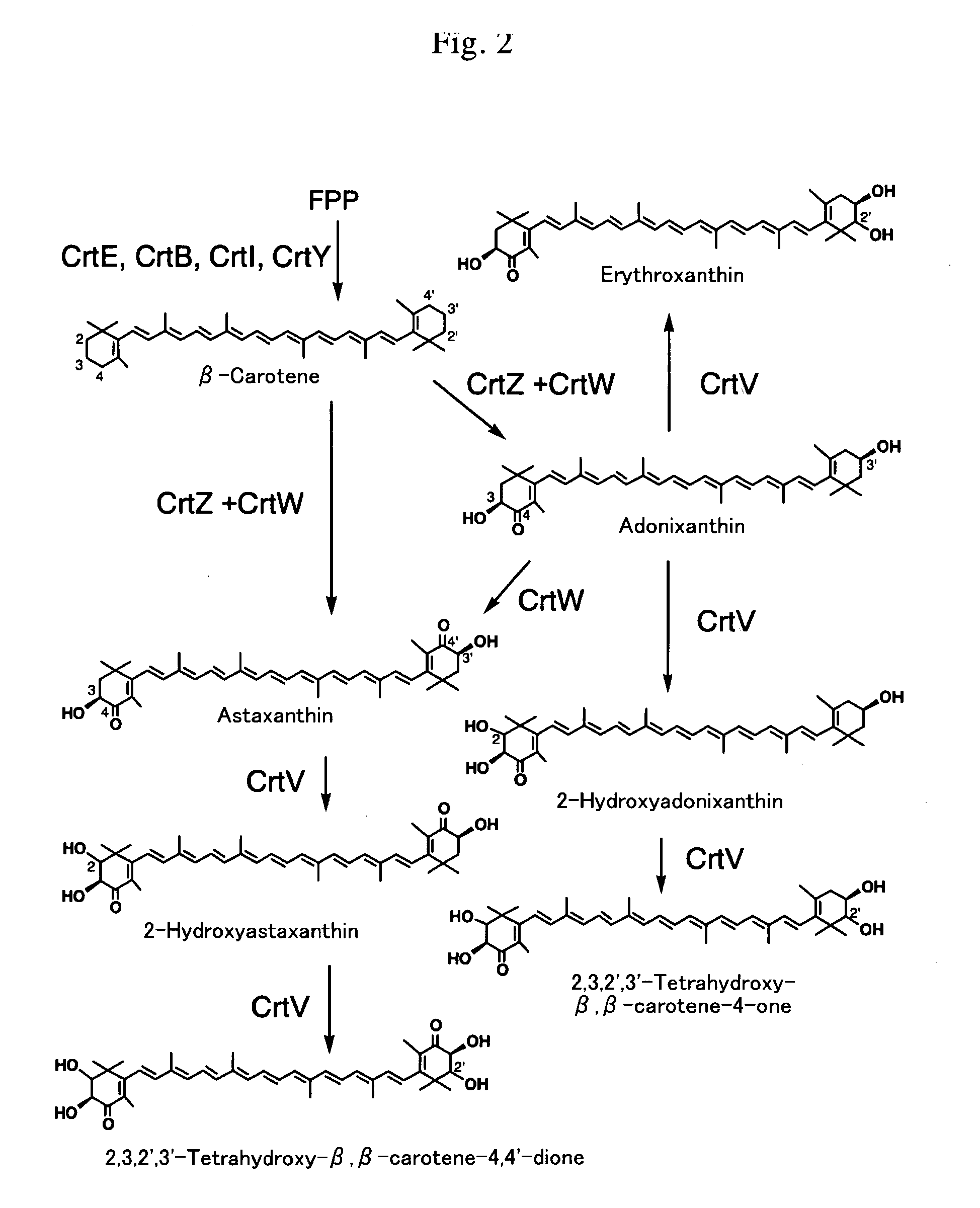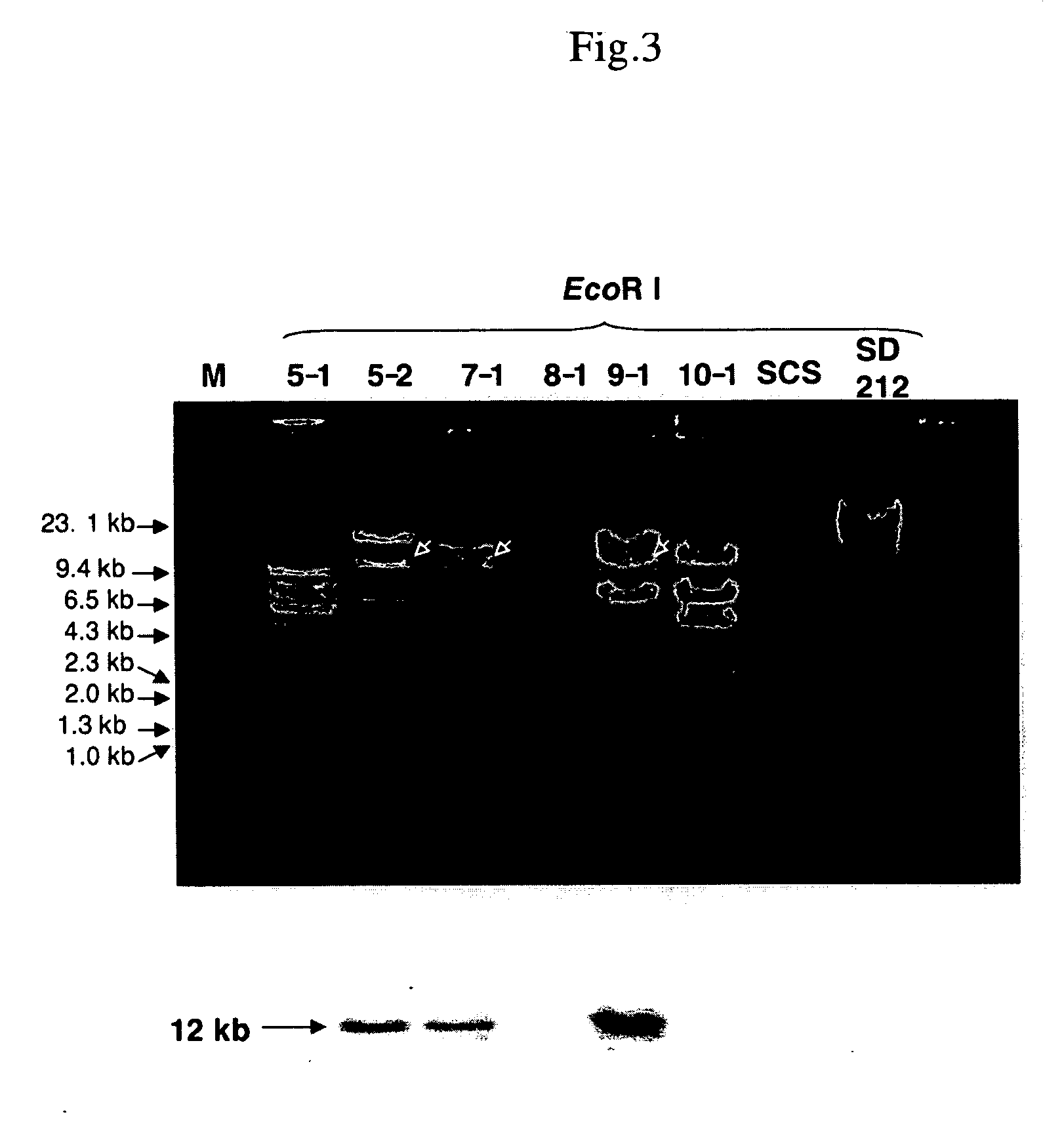Novel carotenoid hydroxylase gene, method for preparing hydroxylated carotenoid, and novel geranylgeranyl pyrophosphate synthase
a technology of geranylgeranyl pyrophosphate and hydroxylase, which is applied in the direction of transferases, drug compositions, enzymology, etc., can solve the problems of skin cancer that is not effective in inhibiting skin cancer, liver cancer is not effective in inhibiting, and the range of species which have been used in prophylactic studies is extremely limited
- Summary
- Abstract
- Description
- Claims
- Application Information
AI Technical Summary
Benefits of technology
Problems solved by technology
Method used
Image
Examples
example 1
Strains, Plasmids and Growth Conditions
[0140] The strains and plasmids used in the invention are shown in Table 1. The strains were cultured at 30° C. in LB (Luria-Bertani) medium or 2×YT medium (Sambrook et al., 1989). When necessary, ampicillin (Ap, 100 μg / ml) or chloramphenicol (Cm, 20 μg / ml) was added to the medium.
[0141] A plasmid for canthaxanthin production (pAC-Cantha) and a plasmid for astaxanthin and adonixanthin (4-ketozeaxanthin) production (pAC-Asta) were constructed as described below.
[0142] Briefly, Paracoccus sp. MBIC 01143 (Agrobacterium aurantiacum)-derived crtW gene was synthesized so that the codon usage is consistent with in GAP gene in yeast Candida utilis. The amino acid sequence encoded by the resultant crtW was made identical with the amino acid sequence of the original CrtW. This method is described previously (Miura et al., 1998). With this totally synthesized crtW sequence as a template, PCR was performed using H1437 primer [containing AvaI site (under...
example 2
Genetic Engineering Experiments
[0148] Conventional genetic engineering experiments such as construction of plasmids, treatment with restriction enzymes, ligation reaction and transformation were conducted according to the methods disclosed in Sambrook et al. (1989), op. cit.
example 3
Preparation of Chromosomal DNA from Brevundimonas sp. Strain SD-212
[0149]Brevundimonas sp. strain SD-212 (SD212; MBIC 03018) was cultured in 300 ml of Marine Broth (MB) medium (Difco) at 25° C. for 3 days. Cells were harvested, washed with STE buffer (100 mM NaCl, 10 mM Tris-HCl, 1 mM EDTA, pH 8.0) twice, thermally treated at 68° C. for 15 min and then suspended in solution 1 (50 mM glucose, 25 mM Tris-HCl, 10 mM EDTA, pH 8.0) containing 5 mg / ml lysozyme (Sigma) and μg / ml RNase A (Sigma). After 1 hr incubation at 37° C., Protenase K (Sigma) was added thereto to give a concentration of 250 μg / ml, followed by incubation at 37° C. for 10 min. N-Lauroylsarcosin-Na was added thereto to give a final concentration of 1% and mixed gently and thoroughly by inverting, followed by incubation at 37° C. for 3 hr. After several times of phenol / chloroform extraction, while adding two volumes of ethanol slowly, chromosomal DNA deposited was wound around a glass rod and rinsed with 70% ethanol. The...
PUM
| Property | Measurement | Unit |
|---|---|---|
| Fraction | aaaaa | aaaaa |
Abstract
Description
Claims
Application Information
 Login to View More
Login to View More - R&D
- Intellectual Property
- Life Sciences
- Materials
- Tech Scout
- Unparalleled Data Quality
- Higher Quality Content
- 60% Fewer Hallucinations
Browse by: Latest US Patents, China's latest patents, Technical Efficacy Thesaurus, Application Domain, Technology Topic, Popular Technical Reports.
© 2025 PatSnap. All rights reserved.Legal|Privacy policy|Modern Slavery Act Transparency Statement|Sitemap|About US| Contact US: help@patsnap.com



